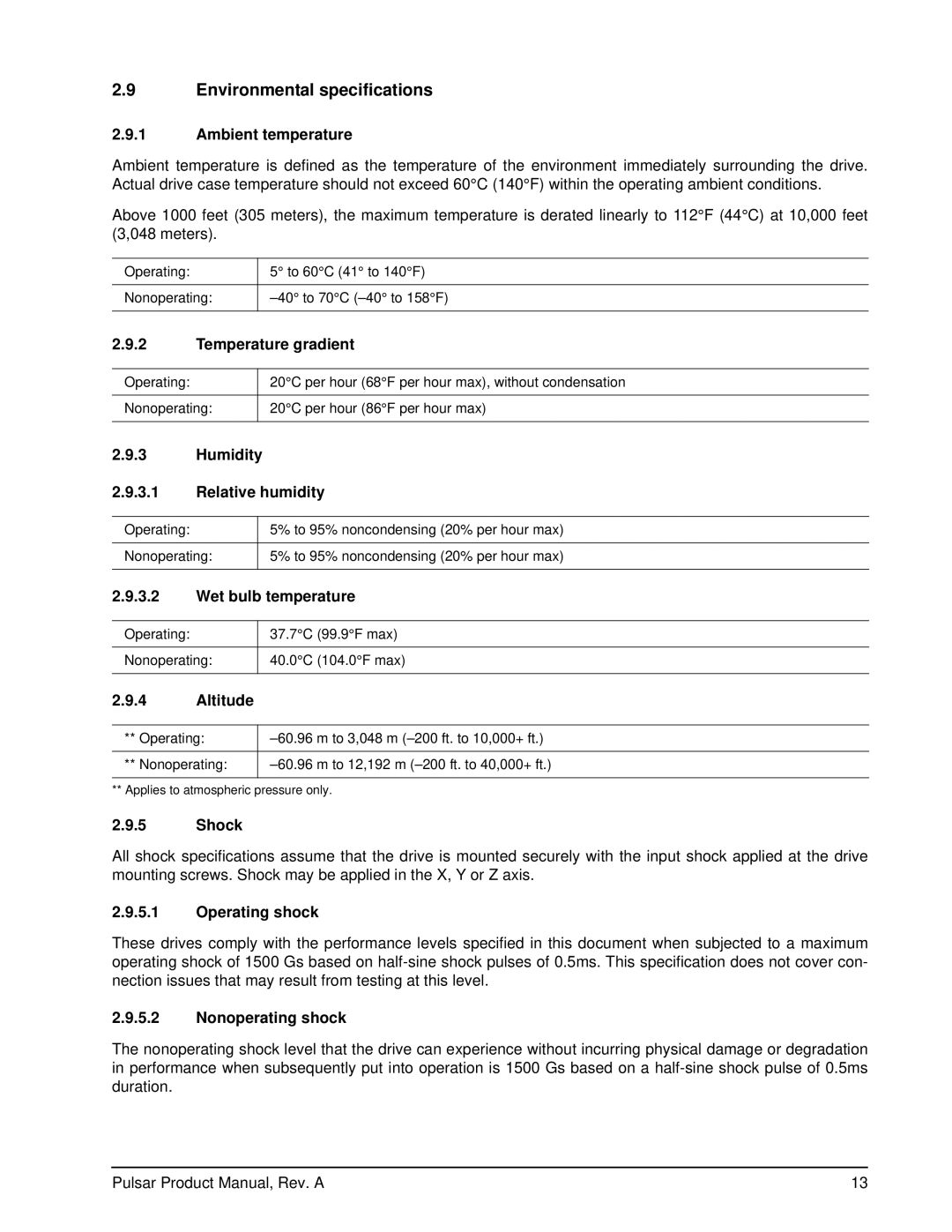2.9Environmental specifications
2.9.1Ambient temperature
Ambient temperature is defined as the temperature of the environment immediately surrounding the drive. Actual drive case temperature should not exceed 60°C (140°F) within the operating ambient conditions.
Above 1000 feet (305 meters), the maximum temperature is derated linearly to 112°F (44°C) at 10,000 feet (3,048 meters).
Operating: | 5° to 60°C (41° to 140°F) |
|
|
Nonoperating: | |
|
|
2.9.2Temperature gradient
Operating: | 20°C per hour (68°F per hour max), without condensation |
|
|
Nonoperating: | 20°C per hour (86°F per hour max) |
|
|
2.9.3Humidity
2.9.3.1Relative humidity
Operating: | 5% to 95% noncondensing (20% per hour max) |
|
|
Nonoperating: | 5% to 95% noncondensing (20% per hour max) |
|
|
2.9.3.2Wet bulb temperature
Operating: | 37.7°C | (99.9°F max) |
|
|
|
Nonoperating: | 40.0°C | (104.0°F max) |
|
|
|
2.9.4Altitude
** Operating: | |
|
|
** Nonoperating: | |
|
|
** Applies to atmospheric pressure only.
2.9.5Shock
All shock specifications assume that the drive is mounted securely with the input shock applied at the drive mounting screws. Shock may be applied in the X, Y or Z axis.
2.9.5.1Operating shock
These drives comply with the performance levels specified in this document when subjected to a maximum operating shock of 1500 Gs based on
2.9.5.2Nonoperating shock
The nonoperating shock level that the drive can experience without incurring physical damage or degradation in performance when subsequently put into operation is 1500 Gs based on a
Pulsar Product Manual, Rev. A | 13 |
